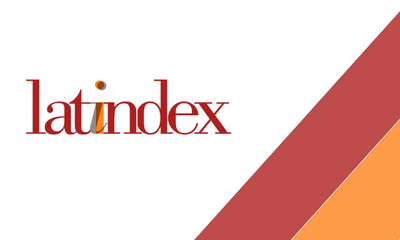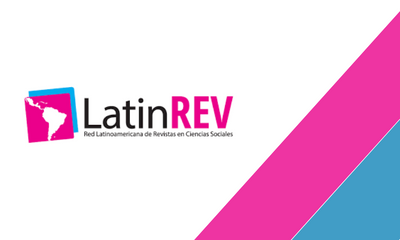Navigating an eclectic methodology: EFL teachers’ perceptions and practices
DOI:
https://doi.org/10.32870/vel.vi24.263Palabras clave:
eclecticism, teaching practices, teachers’ perceptions, effectivenessResumen
The successful implementation of any method or approach in language teaching depends largely on teachers’ attitudes, behaviors, and actions inside and outside the classroom. This quantitative study examines the perceptions and practices of sixty-five EFL teachers regarding the implementation of an eclectic methodology at a prominent public university in Mexico. Its researcher-designed questionnaire revealed that the methodology is flexible and practical, and it is not difficult to implement compared to previous methods. In terms of teaching practices, the analysis uncovered two opposing tendencies: divergent and convergent practices toward the eclectic methodology theoretical principles. Moreover, the top three practices were related to students’ language production, which belongs to the convergent tendency. The contribution that these results bring to the ELT field is relevant due to the novelty of the subject of study but, more importantly, to gaining an understanding of how teachers’ perceptions shape the way they teach in class in a context where an eclectic methodology is implemented.
Descargas
Métricas
Citas
Canale, M. (1983). From communicative competence to communicative language pedagogy. In J. C. Richard & R. W. Schmidt (Eds.), Language and Communication (pp. 02-28). London: Longman.
Canale, M., & Swain, M. (1980). Theoretical bases of communicative approaches to second language teaching and testing. Applied Linguistics, 1, 1-47.
Casimiro, S., Camacho, H., & Moya, M. (2009). The FESI Methodology. Unpublished methodology for teaching languages.
Castillo, A., Alcocer, E., & Pinto, J. (2019). Perceptions of English language teachers from public high schools in Yucatan, Mexico. Enseñanza formación y desarrollo del profesional de la enseñanza de lenguas, 10, 33-42.
Council of Europe. (2001). Common European framework of reference for language learning and teaching. Cambridge, UK: Cambridge University Press.
Fadi, A. (2022). A systematic review of the eclectic approach application in language teaching. Saudi Journal of Language Studies, 2(1), 1-11.
Gao, L. (2011). Eclecticism or principled eclecticism. Creative Education, 2(4), 363-369.
González, D., Ladino, J., & Escobar, D. (2020). Percepciones de estudiantes sobre los métodos de enseñanza en los cursos de Inglés de una licenciatura en lenguas extranjeras de una universidad colombiana: Un estudio de caso. Revista ESPACIOS, 41(48).
Hashemnezhad, H. (2013). Input processing and processing instruction: Definitions and issues. International Journal of Applied Linguistics & English Literature, 2(1), 24-27.
Hughes, K., & Chen, B. (2008). University teachers and students’ perception of ELT methodologies and their effectiveness. GEA Online Journal of Languages Studies, 8(2), 79-102.
Jain, N. K. (2005). Organizational behavior (Vol. 1). New Delhi: Atlantic Publishers & Distributors.
Kumaravadivelu, B. (1994). The postmethod condition: (E)merging strategies for second/foreign language teaching. TESOL Quarterly, 28(1), 27-48.
Lara, R., et al. (2016). Mexican teachers’ perceptions of teaching English through content-based instruction in the state of Guanajuato, Mexico: A dual perspective. Entreciencias: Diálogos en la Sociedad del Conocimiento.
Larsen-Freeman, D. (2000). Techniques and principles in language teaching. Oxford: Oxford University Press.
Molero-Ramírez, F. (2022). Eclecticismo basado en evidencias en la enseñanza de inglés. Paradigma, 43(2).
Mosquera, C. (2021). English teaching methodologies of modern languages graduates from a university in Colombia. HOW Journal, 28(1), 91-120.
Mukalel, J. C. (2007). Approaches to English language teaching. Discovery Publishing House.
Nunan, D. (2015). Teaching English to speakers of other languages: An introduction. Routledge.
Richards, J. C. (2001). Curriculum development in language teaching. Cambridge: Cambridge University Press.
Richards, J. C., & Lockhart, C. (1994). Reflective teaching in second language classrooms. Cambridge: Cambridge University Press.
Richards, J. C., & Rodgers, T. S. (2014). Approaches and methods in language teaching (3rd ed.). Cambridge: Cambridge University Press.
Schütz, R. (1998). Stephen Krashen's theory of second language acquisition. Retrieved from https://www.sk.com.br/sk-krash-english.html
Valledor, A., Olmedo, A., Hellín, C., et al. (2023). The eclectic approach in English language teaching applications: A qualitative synthesis of the literature. Sustainability, 15(15), 1-31.
VanPatten, B. (1996). Input processing and grammar instruction: Theory and practice. Ablex.
VanPatten, B. (2003). From input to output: A teacher’s guide to second language acquisition. New York: McGraw Hill.
Widdowson, H. (1983). Learning purpose and language use. Oxford: Oxford University Press.







